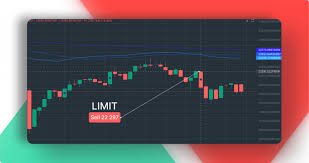In the volatile forex market, stop and limit orders serve as essential tools for controlling risk and securing profits. These orders help traders manage potential losses and lock in profits without having to monitor the market constantly.
Key Points about Stop and Limit Orders:
- Limit Orders:
- A limit order lets traders set a specific price at which they want to buy or sell a currency.
- A buy limit order is placed below the current market price to buy at a lower price.
- A sell limit order is placed above the current market price to sell at a higher price.
- Stop Orders:
- A stop order is used to specify a price at which you want to enter or exit a position, and it becomes a market order once triggered.
- A buy stop order is placed above the current market price to buy when the price rises.
- A sell stop order is placed below the current market price to sell when the price falls.
How to Use Stop Orders
- Limit Losses: Stop orders can minimize potential losses by automatically exiting positions at a predetermined price (stop-loss).
- Protect Profits: When a trade becomes profitable, you can adjust stop orders to lock in profits, moving them into the profit zone as the market moves in your favor.
- Breakout Trades: Traders use stop orders to enter markets when breakouts occur, such as placing a buy-stop order above resistance for an upward move.
How to Use Limit Orders
- Fading Breakouts: A limit order can be used to bet against breakouts (i.e., to fade them), such as shorting near resistance or buying near support.
- Profit Taking: Traders place limit orders to set their profit targets, ensuring they exit when the market reaches their desired price.
Types of Stop Orders
- Buy-Stop: Buy when the price is above the current market price.
- Sell-Stop: Sell when the price is below the current market price.
The Flexibility of Stop and Limit Orders
- Both types of orders are flexible, with most brokers offering the ability to adjust order conditions based on a trader’s specific strategy or risk tolerance.
- Choosing Order Placement: Traders should avoid placing orders too close to the current price, as market volatility may trigger them prematurely.
Managing Losses and Profits with Stop/Limit Orders
- Use stop orders to prevent excessive losses and protect profits as the market moves in your favor.
- Be cautious with your stop and limit orders’ proximity to the current price to avoid triggering them unnecessarily due to market fluctuations.
The Importance of Stop and Limit Orders in Forex Trading
- The forex market can be highly volatile, and leverage amplifies both profits and losses. Thus, stop and limit orders act as safety nets for traders, helping them make strategic decisions without relying on emotional reactions.
By understanding the proper use of stop and limit orders, forex traders can better manage their trades, ensuring they stay within their desired risk and reward parameters.
Join Kenyan Gen z and millennials official 2025 WhatsApp Channel To Stay Updated On time the ongoing situation https://whatsapp.com/channel/0029VaWT5gSGufImU8R0DO30
Tiktok – https://www.tiktok.com/@news.hub88?_t=ZM-8sz45qJid3V&_r=1


